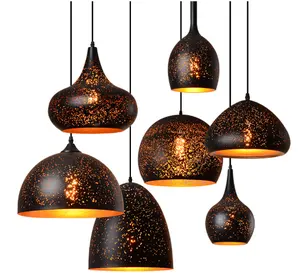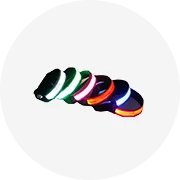Phổ biến trong ngành của bạn

Hot bán RY-WS301/485 nhiệt độ và độ ẩm Transmitter nhiệt độ độ ẩm cảm biến
16,00 US$ - 25,00 US$
Đơn hàng tối thiểu: 1 Bộ
Vận chuyển mỗi chiếc: 7,23 US$


Tiêu Chuẩn FSR 100G ~ 10Kg Cảm Biến Cảm Ứng Linh Hoạt Đuôi Ngắn Kháng Lực Nhạy Cảm
1,81 US$ - 2,58 US$
Đơn hàng tối thiểu: 100 Cái


Thiết kế mới Ammonia phát hiện công nghiệp ngầm điện hóa ống loại RY-CNH3 Ammonia cảm biến
270,00 US$ - 280,00 US$
Đơn hàng tối thiểu: 1 Bộ


Cảm biến với Bộ khuếch đại phản xạ tích hợp với chức năng MSR E3Z-R61 E3Z-R81 E3Z-R66 E3Z-R86 cảm biến quang điện
15,00 US$ - 30,00 US$
Đơn hàng tối thiểu: 1 Cái


Taidacent Din Rail MQ139 R22a R134a CFC Máy Phân Tích Khí Lạnh Halogen Thiết Bị Giám Sát Rò Rỉ Chất Làm Lạnh Cảm Biến Rò Rỉ Freon
51,08 US$ - 52,58 US$
Đơn hàng tối thiểu: 1 Cái
Vận chuyển mỗi chiếc: 16,70 US$

TGS832-A00 Cảm Biến Khí Halogen
Sẵn sàng vận chuyển
28,90 US$
Đơn hàng tối thiểu: 1 Cái
Vận chuyển mỗi chiếc: 20,00 US$


Mới và độc đáo Halogen phát hiện môi chất lạnh Cảm biến khí tgs2630
0,10 US$ - 1,00 US$
Đơn hàng tối thiểu: 1 Cái

Figaro tgs832 Halogen cảm biến khí hydrocarbon TGS832-A00 cảm biến khí
Sẵn sàng vận chuyển
30,00 US$ - 35,00 US$
Đơn hàng tối thiểu: 1 Cái
Vận chuyển mỗi chiếc: 5,31 US$

Mới và độc đáo Halogen phát hiện môi chất lạnh Cảm biến khí tgs2630
1,00 US$
Đơn hàng tối thiểu: 1 Cái
Vận chuyển mỗi chiếc: 27,20 US$

Mới và độc đáo Halogen phát hiện môi chất lạnh Cảm biến khí tgs2630
0,10 US$ - 1,00 US$
Đơn hàng tối thiểu: 1 Cái
Các tìm kiếm liên quan:
cảm biến ánh sáng halogencảm biến glucose nhẹcảm biến cường độ rungcảm biến ánh sáng emscảm biến wirtgencảm biến xả nước nhà vệ sinhcảm biến cường độcảm biến diabetcảm biến dễ cháycảm biến điện dung ánh sángbán cảm biến ircảm biến công suất chuyển động siêu âmcảm biến nước zwavecảm biến nói giọng nóicảm biến cường độ lượng mưa

Mới và độc đáo Halogen phát hiện môi chất lạnh Cảm biến khí tgs2630
0,10 US$ - 1,00 US$
Đơn hàng tối thiểu: 1 Cái


TGS832-A00 cảm biến khí Halogen
Sẵn sàng vận chuyển
28,90 US$
Đơn hàng tối thiểu: 1 Cái
Vận chuyển mỗi chiếc: 16,55 US$

Mới và độc đáo Halogen phát hiện môi chất lạnh Cảm biến khí tgs2630
0,10 US$ - 1,00 US$
Đơn hàng tối thiểu: 1 Cái

New and original Halogen refrigerant detection gas sensor TGS2630
0,10 US$ - 1,00 US$
Đơn hàng tối thiểu: 1 Cái

Shen Zhen TGS832-A00 cảm biến trong kho cho phát hiện của Freon khí
3,50 US$ - 4,20 US$
Đơn hàng tối thiểu: 2 Cái
Vận chuyển mỗi chiếc: 1,00 US$

Hot-bán YF2A15-090UB5XLEAX 2095846 phích cắm và cáp: cảm biến/Kích thích cáp
Sẵn sàng vận chuyển
11,00 US$ - 12,60 US$
Đơn hàng tối thiểu: 1 Cái
Vận chuyển mỗi chiếc: 12,21 US$

73762-50 cảm biến chuyển đổi giới hạn thiết bị chuyển mạch điện tử thành phần công nghiệp thiết bị điện cảm biến
0,10 US$ - 0,30 US$
Đơn hàng tối thiểu: 1 Cái

Máy Biến Áp Điện Tử 6.8mh Tần Số Cao OEM Cho Đèn Halogen 12V
0,40 US$ - 0,50 US$
Đơn hàng tối thiểu: 100 Cái

Công Tắc Cảm Biến Điều Chỉnh Độ Sáng Cảm Ứng Thời Trang Giá Xuất Xưởng Công Tắc Cảm Biến Cảm Ứng 12V Gương Đèn Led Chất Lượng Cao BS014
5,00 US$ - 6,20 US$
Đơn hàng tối thiểu: 1 Cái
Vận chuyển mỗi chiếc: 19,32 US$

0554 3180 testo phụ tùng cảm biến đầu cho testo 316-4 rò rỉ Detector cho CFC, HFC (một phần và hoàn toàn Halogen hóa), H2
150,00 US$ - 160,00 US$
Đơn hàng tối thiểu: 1 Cái

Honeywell Sử Dụng Trong Máy Dò Khí Midas Cung Cấp Chất Lượng Vượt Trội Và MIDAS-E-HAL Re Halogen Group (Cl2, F2)
345,00 US$ - 360,00 US$
Đơn hàng tối thiểu: 1 Cái

Yiqida lr129291 tự động hệ thống điện cảm biến đỗ xe công viên assit máy ảnh cho Land Rover khám phá V thể thao Hậu vệ phạm vi Rover

265,00 US$ - 289,00 US$
Đơn hàng tối thiểu: 10 Cái
Vận chuyển mỗi chiếc: 9,47 US$

Cảm Biến Áp Suất Lốp TPMS OEM PMV-C010 42607-30100 42607-52020 42607-06020 42607-33040 Cho Camry Corolla Scion Lexus
Sẵn sàng vận chuyển
8,50 US$ - 9,20 US$
Đơn hàng tối thiểu: 2 Cái
Vận chuyển mỗi chiếc: 7,60 US$

Nhà Máy Giá Xe cảm biến Oxy Phụ kiện cho geely Panda CK MK Vua Kong goolray tugella xingyue binray emgrand GX3 ec7 ec8
2,12 US$ - 6,23 US$
Đơn hàng tối thiểu: 20 Cái
Vận chuyển mỗi chiếc: 34,43 US$

Yjj TGS832-A00 Halogen khí/Freon cảm biến
Sẵn sàng vận chuyển
40,00 US$
Đơn hàng tối thiểu: 1 Cái
Vận chuyển mỗi chiếc: 12,20 US$

Figaro Halogen cảm biến khí tgs832 cảm biến hydrocarbon TGS832-A00
30,00 US$ - 35,00 US$
Đơn hàng tối thiểu: 1 Cái
Vận chuyển mỗi chiếc: 5,31 US$

TGS832-A00 cảm biến khí Halogen
Sẵn sàng vận chuyển
28,90 US$
Đơn hàng tối thiểu: 1 Cái
Vận chuyển mỗi chiếc: 16,55 US$

Phát hiện TGS832-A00 Freon Halogen cảm biến khí Halogen Halogen phát hiện rò rỉ khí hydrocarbon
30,00 US$ - 50,00 US$
Đơn hàng tối thiểu: 1 Cái

80413-10 Cảm biến chuyển đổi giới hạn thiết bị chuyển mạch điện tử thành phần công nghiệp thiết bị điện cảm biến
0,10 US$ - 0,30 US$
Đơn hàng tối thiểu: 1 Cái

IC TGS2618 Combustible GAS butane LP GAS Sensor TGS2618-D00 DIP4
5,00 US$ - 8,00 US$
Đơn hàng tối thiểu: 10 Cái

Cảm Biến Áp Suất Lốp TPMS Cho Scion Lexus OEM PMV-C010 42607-33040 42607-52020 42607-06020 42607-30100
Sẵn sàng vận chuyển
8,50 US$ - 9,30 US$
Đơn hàng tối thiểu: 2 Cái
Vận chuyển mỗi chiếc: 7,60 US$

R-134 R-407 Halogen khí Freon cảm biến tgs832 mô-đun
Sẵn sàng vận chuyển
50,00 US$
Đơn hàng tối thiểu: 1 Cái
Vận chuyển mỗi chiếc: 12,20 US$

Digital intelligent pyroelectric infrared sensor AM312
1,19 US$ - 1,49 US$
Đơn hàng tối thiểu: 100 Cái
Vận chuyển mỗi chiếc: 1,00 US$

Cảm Biến thông minh AR5750A Lạnh Máy Phát Hiện Khí, Halogen Phát Hiện Rò Rỉ Khí
Sẵn sàng vận chuyển
69,69 US$ - 76,78 US$
Đơn hàng tối thiểu: 1 Cái
Vận chuyển mỗi chiếc: 27,00 US$

Cảm biến thông minh ar5750b sf6 Gas Detector Halogen gas Tester refrigerant Detector
89,00 US$
Đơn hàng tối thiểu: 5 Cái
Vận chuyển mỗi chiếc: 16,34 US$

Cảm biến thông minh ar5750b kỹ thuật số Halogen Gas Detector Alarm sf6 lạnh gas rò rỉ Detector Freon phân tích khí
48,00 US$ - 51,00 US$
Đơn hàng tối thiểu: 5 Cái

Máy Dò Rò Rỉ Chất Làm Lạnh Elitech HLD-200 Với Cảm Biến Thay Thế
45,00 US$ - 48,00 US$
Đơn hàng tối thiểu: 1 Cái
Các danh mục hàng đầu
Giới thiệu về cảm biến halogen
Tìm kiếm cảm biến halogen. và có được nguồn ánh sáng tuyệt vời hoạt động như một giải pháp thay thế hiệu quả hơn cho đèn sợi đốt truyền thống. Lắp chúng vào đèn pha ô tô để duy trì tầm nhìn rõ ràng trên đường, đặc biệt là trong điều kiện ánh sáng yếu. Mua cảm biến halogen. và sử dụng chúng trong đèn chiếu sáng an ninh hoặc chiếu sáng dọc theo các lối đi. Mỗi bóng đèn đều cung cấp đủ độ sáng và hiệu suất lâu dài để giảm nhu cầu thay đổi bóng đèn thường xuyên.
Một số cảm biến halogen. được thiết kế để sử dụng ít năng lượng hơn, làm cho chi phí năng lượng thấp hơn cho một ngôi nhà hoặc doanh nghiệp. Hầu hết sẽ phát ra ánh sáng trắng dịu không quá gắt mắt. Một số loại lý tưởng cho đèn chiếu theo phong cách cổ điển và có thể được sử dụng trong các nhà hàng và khách sạn theo chủ đề. Kính trong giúp giữ đèn ở độ sáng tối ưu.
Duyệt qua cảm biến halogen. trên Alibaba.com và tìm các nhà cung cấp cung cấp nhiều tùy chọn kích thước để bán. Thêm một phản xạ bằng gốm hoặc thép để đáp ứng các nhu cầu khác nhau. Hầu hết các nhà cung cấp đều được chứng nhận bởi nhiều tổ chức từ khắp nơi trên thế giới để đảm bảo chất lượng và an toàn. Một số thiết kế có thể hoạt động đến 2000 giờ cùng một lúc trước khi cần thay thế mới. Mỗi cái đều dễ cài đặt cho cả thợ điện và những người đam mê DIY.
Hãy tìm kiếm cảm biến halogen. tại Alibaba.com và chọn một tùy chọn sẽ giúp tiết kiệm tiền về lâu dài. Tận hưởng các giải pháp chiếu sáng chất lượng cao, dễ sử dụng trong nhiều ngành công nghiệp khác nhau. Xây dựng đơn đặt hàng tùy chỉnh với kích thước và độ sáng phù hợp và giữ mức sử dụng năng lượng ở mức tối thiểu.
Một số cảm biến halogen. được thiết kế để sử dụng ít năng lượng hơn, làm cho chi phí năng lượng thấp hơn cho một ngôi nhà hoặc doanh nghiệp. Hầu hết sẽ phát ra ánh sáng trắng dịu không quá gắt mắt. Một số loại lý tưởng cho đèn chiếu theo phong cách cổ điển và có thể được sử dụng trong các nhà hàng và khách sạn theo chủ đề. Kính trong giúp giữ đèn ở độ sáng tối ưu.
Duyệt qua cảm biến halogen. trên Alibaba.com và tìm các nhà cung cấp cung cấp nhiều tùy chọn kích thước để bán. Thêm một phản xạ bằng gốm hoặc thép để đáp ứng các nhu cầu khác nhau. Hầu hết các nhà cung cấp đều được chứng nhận bởi nhiều tổ chức từ khắp nơi trên thế giới để đảm bảo chất lượng và an toàn. Một số thiết kế có thể hoạt động đến 2000 giờ cùng một lúc trước khi cần thay thế mới. Mỗi cái đều dễ cài đặt cho cả thợ điện và những người đam mê DIY.
Hãy tìm kiếm cảm biến halogen. tại Alibaba.com và chọn một tùy chọn sẽ giúp tiết kiệm tiền về lâu dài. Tận hưởng các giải pháp chiếu sáng chất lượng cao, dễ sử dụng trong nhiều ngành công nghiệp khác nhau. Xây dựng đơn đặt hàng tùy chỉnh với kích thước và độ sáng phù hợp và giữ mức sử dụng năng lượng ở mức tối thiểu.



















